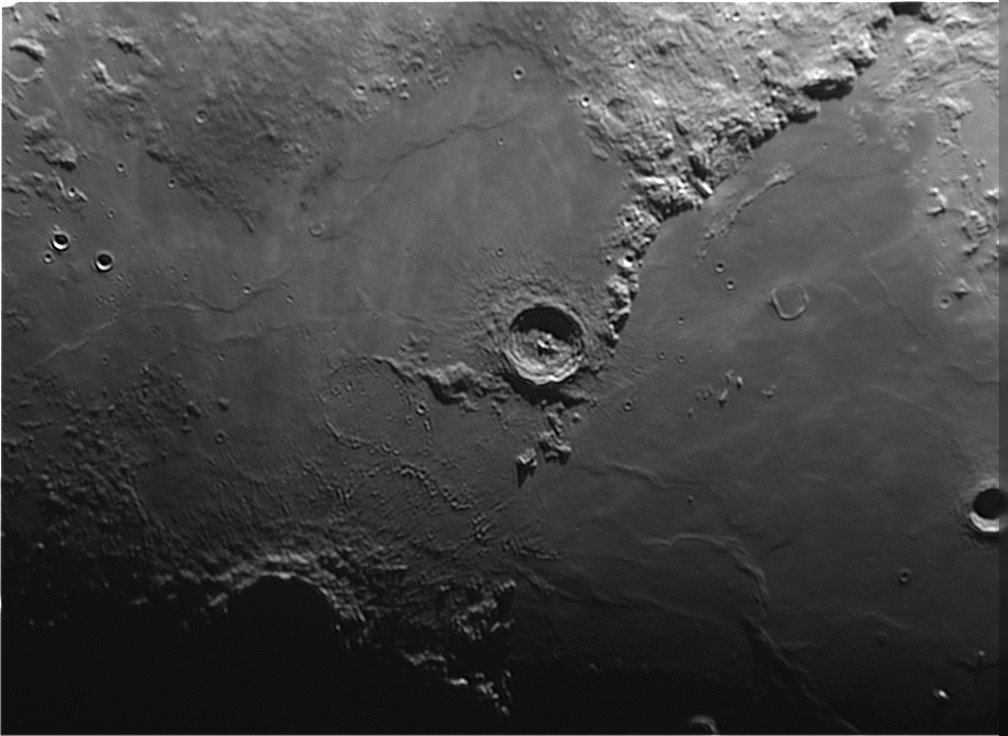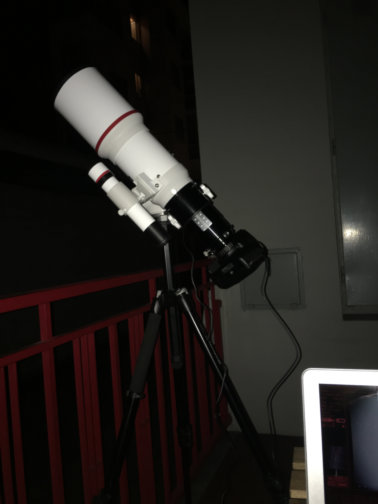When I started taking pictures of the night sky and of its objects, my instruments of choice were short refractors and camera lenses. I also had my small Meade 2045D SCT, but it was kept somewhat on the backburner, my refractors and camera lenses being both “faster” and of shorter focal length, and hence more easy to manage.
And then there was the Skywatcher MAK-90, which was really meant only to be used for lunar and planetary photography, plus, maybe, just maybe, some bright planetary nebula.
And indeed, if used at his native focal length of 1250 mm, with a focal ratio of 13.8, it is rather “unfit” for imaging DSO objects, particularly if paired with the less sensitive DSLR camera.
The only picture I got in that configuration was this, rather dark, representation of the Eskimo Nebula:

I also made some experiments with the brightest globulars, like M3 and M13, but, again, the results were quite dim.
What dramatically changed my view of the little Maksutov and, above all, my use of it, was the purchase of the highly sensitive ASI ZWO 178MM camera, AND its pairing with a very cheap 0.5x focal reducer produced by TS.

The real focal length of the optical system obtained by adding this focal reducer on top of the 31.8 mm “nose” of the ZWO ASI camera is about 680 mm, which means a focal ratio of approximately 7.5, at the limit of what is conventionally considered as “photographic range”.
If a 25 mm Extension Tube is added to the focal path
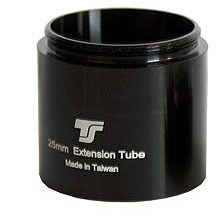
a nominal 0.3x focal reduction should be achievable according to the producer, but with my MAK-90 I did not go beyond a factor of 0.39x, obtaining a focal length of about 485-490 (somewhat variable with the use of filters) and a focal ratio around F 5.4 .
A good explanation of how the focal reduction varies with distance in a similar reducer by GSO can be found here .
The following image, taken from the site linked above, offers a quick summary:

In most of my pics, however, I initially stuck with the 680 mm / F7.5 combination, and got really unexpected result.
Since 2020 I have started to use also the 490 mm / F5.4 combination, which is obviously faster and allows to image a wider field, but at the price of manifest vignetting (which can be dealt with using flats) and increased aberrations at the borders. Its fully corrected field is probably close to 25 minutes of arc.
On the other hand, at F7.5, possibly because of the good correction of the MAK optics, certainly facilitated by its all-spherical surfaces, and also because of the small (8.82 mm) diagonal of the sensor, the images come out with little aberration, the absence of a flattener or corrector in the reducer notwithstanding.
And what can be obtained is very impressive, given the aperture, the short exposures due to the altazimuth configuration, and the city site from which the images are taken.
For instance now the Eskimo Nebula looks like this:

And that is far from being the best example of what the small Maksutov can do:
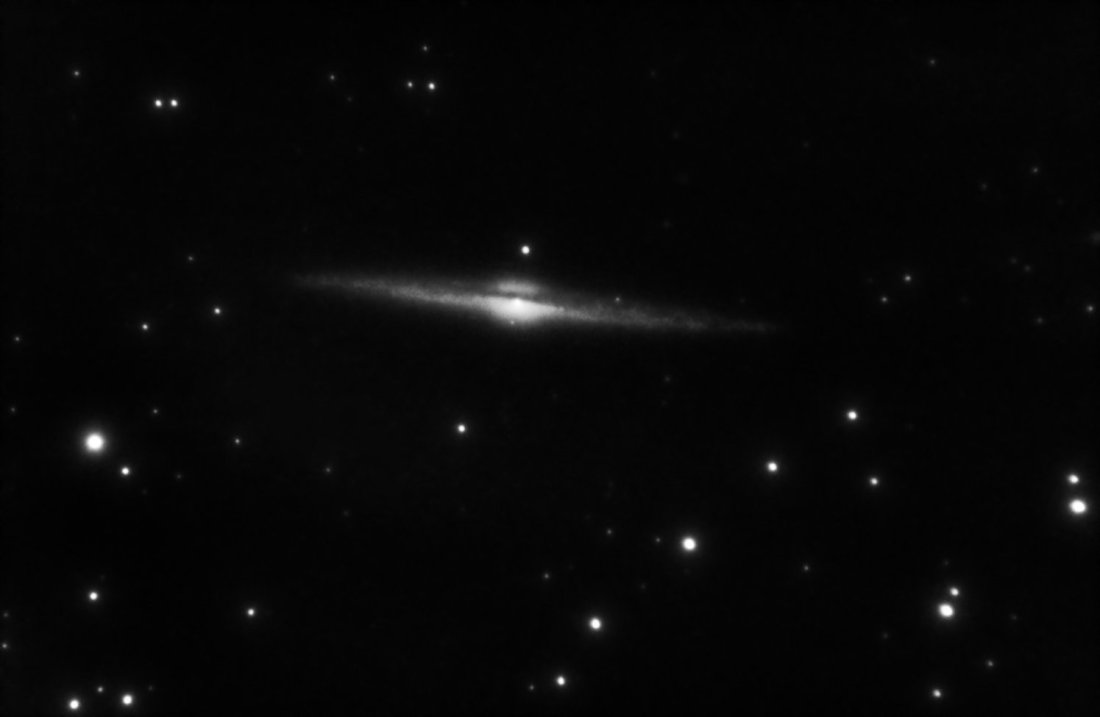
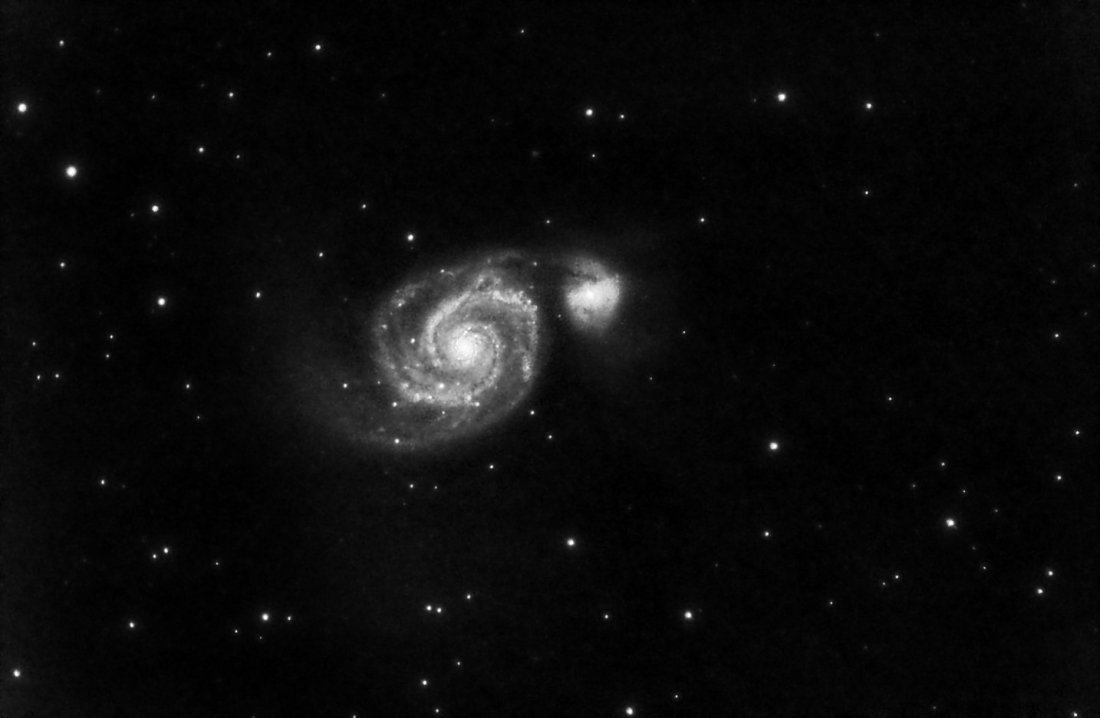

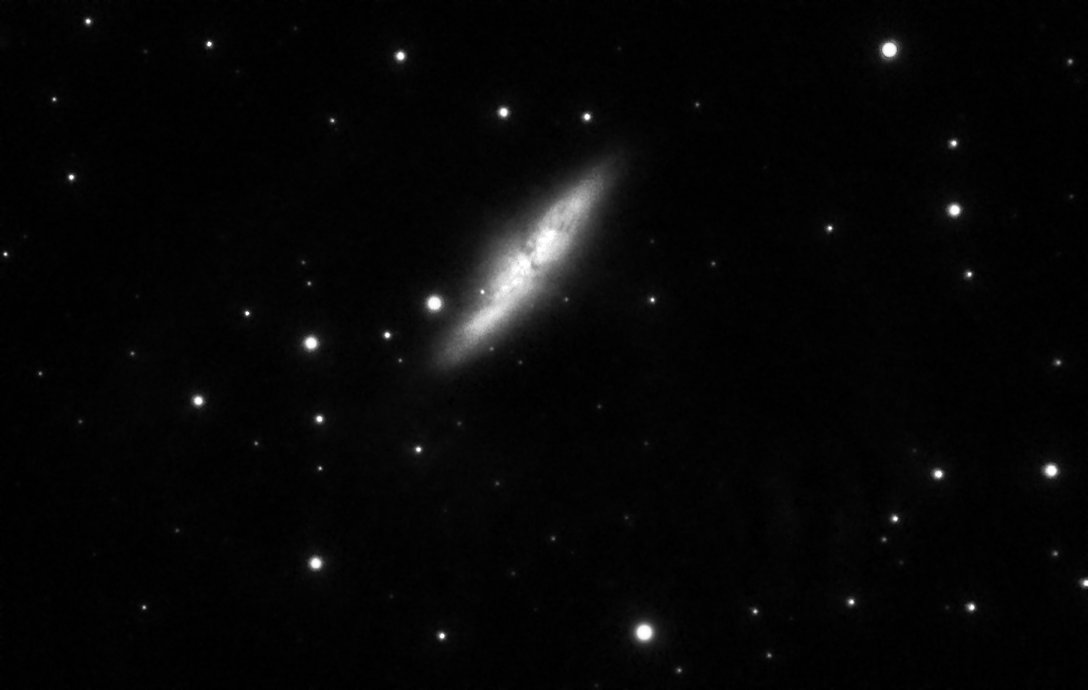

The Ring Nebula, with a little help by an Astronomik UHC-E filter reveals many details to the small aperture:
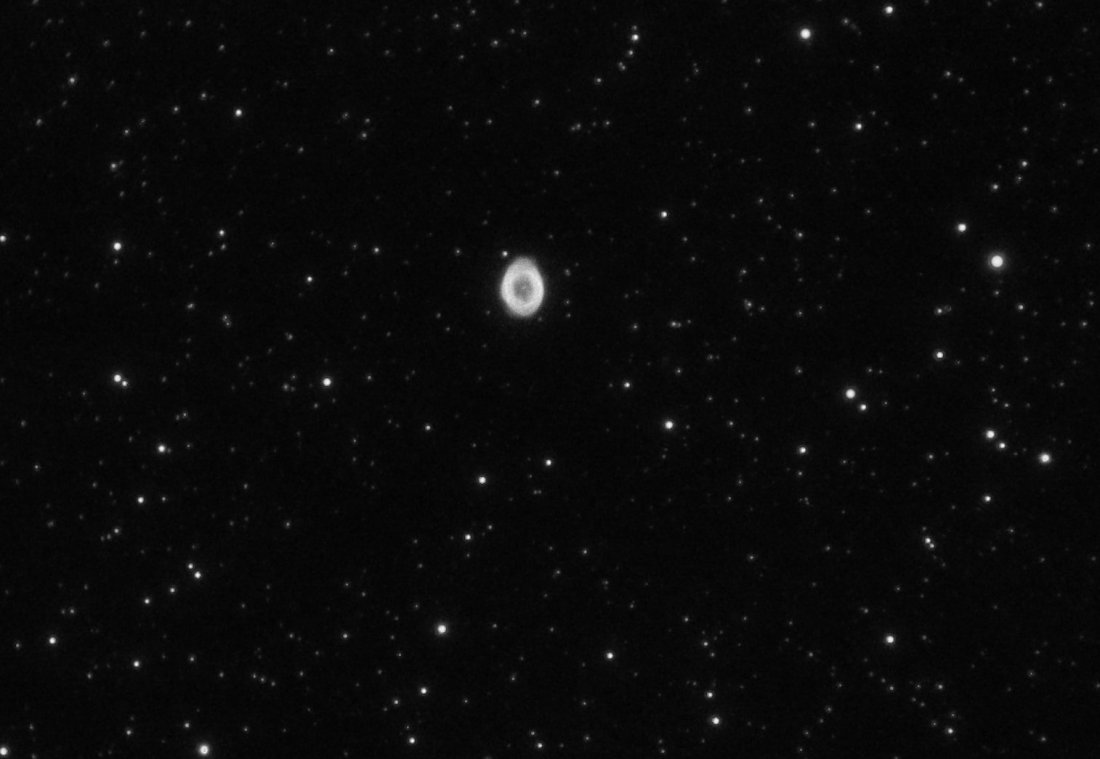
As far as really dim object are concerned, in this beautiful image of M13, you can barely discern on the top center-right the galaxy IC4617: a 15.9 magnitude galaxy imaged under a 17.8 SQM urban sky with a 90 mm Maksutov!

As regards nebulas, the little MAK proved its mettle with this image of the well known Bubble Nebula.
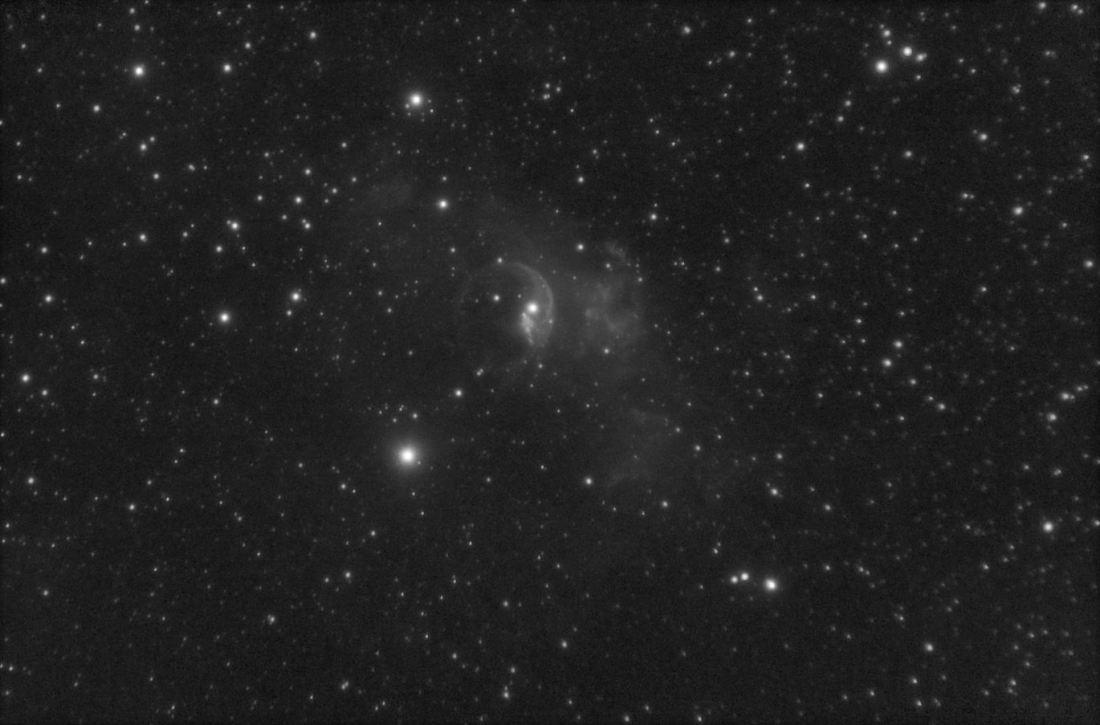
Conclusions
Never accept the mainstream lore without before giving a try to your wildest guesses.
Of course, most people usually prefer that others put their money where their original brainchildren are, so it is important that those who have made the experience make publicly available the results of their trials.
Perhaps not everybody likes to publish one’s failures, but when you get an unexpected success, it is all much easier …
Moreover putting together such a setup is (relatively to what is the standard in astrophotography) rather cheap: the small MAK may be bought for about 160 euro, the focal reducer costs less than 50 euro and the camera I use can be purchased for less than 400 euro.
All in all, with about 600 euro you can put together a surprisingly good and unexpected astrograph, so light at 1.8 kg with the camera, that any mount, even a light astrotracker, can cope with it.
And finally, for the same money, you also have, at his native length a quite good (for the aperture) lunar and planetary telescope, but this, of course, is what it was made for in the beginning.
